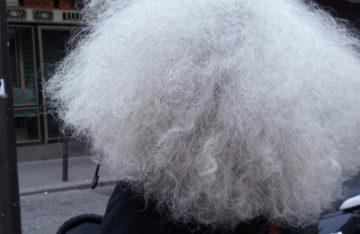 Alain ANDRÉ
Alain ANDRÉ
Extract
“If body image is what we think we look like, style is meant to express who we think we are, and since we spend most of our lives dressed, not naked, clothes can efficiently announce something about a person’s character. Whether sober and sleek, humorous, sweet, modest, loud, or dangerous – they serve as an indication of personality. When I put on my clothes, I hope that the dresses and trousers and blouses and coats and shoes and boots and scarves and purses and all the rest of the sartorial paraphernalia I select will speak for me, will suggest to the world an idea I have about myself. It is interesting to ask how these ideas come about. I have learned after almost 30 years of marriage that my husband regards any shirt with a shiny fabric (even the barest sheen) as anathema to his true character. My sister Liv wears a lot of jewellery and she looks wonderful in it. I have sometimes tried to imitate her, but inevitably take it all off and leave on what I always wear – earrings. A lot of jewellery just isn’t « me ». But what is this me-ness about? Where does it come from?”
Our suggestion
This extract is taken from the third paragraph of an article first published in May 2005 and later printed in Living Thinking Looking (2012 and published in France by Actes-Sud in 2013). Siri Hustvedt has collected together some 500 pages of her “subjective essays” (in the style of Montaigne). “Outside the Mirror” opens with an irrefutable statement: “I see far less of myself then other people do”. The writer then observes that “instead of actually seeing ourselves” we have an “idea” of what we look like: a body image or identity. Our “style”, what we wear, is therefore meant to “express” this “identity”. Each and every one of us in fact has to put up with a great inconvenience: we can’t see ourselves (thin people think they are fat and vice versa), but we do have a fluctuating vision of “an ideally dressed self”. Isn’t dressing learning how to manage this falsified vision of ourselves? And as a consequence mourning our tendency to copy others (for instance Siri covering herself in jewellery like Liv)? Siri Hustvedt thinks she knows where her ideal image came from: Hollywood glamour. It all started with the white dress with a blue border worn by Hayley Mills in the leading role of Walt Disney’s Pollyanna. What about you? What image do you have of your body? How do you manage the tension between your body image and the vision of your ideally dressed self? Of what does your “ideal image” consist? Which memories, images and references? Tell us. And send us your best piece (one page maximum).
Reading
Siri Hustvedt, born to Norwegian parents in Minnesota in 1955, is now recognised as a great novelist. The success of her third novel What I loved (2003) brought her to the attention of a large public. Her other novels The Blindfold (1993), The Enchantment of Lily Dahl (1996), The Sorrow of an American (2008) and The Summer without Men (2011) have all been published in France by Actes-Sud. I have read all her novels and loved them. Siri Hustvedt is extremely sensitive (as can be perceived in the The Blindfold which boldly explores the influences unconsciously at play in society). A doctor in English Literature who refused to observe the strict boundaries of academic discipline, Siri Hustvedt has an insatiable thirst for knowledge and understanding. Her essays are connected and do not, on occasion, hesitate to “popularise” (it is never a bad thing to return to our classics when they are so well expressed) literary experience, the legacy of psychoanalysis and recent studies in neuroscience. This transversality enables her to tackle, sometimes old, topics once again: origins (Yonder, 1999), neurological trouble (The Shaking Woman or a History of my Nerves, 2010), painting (Mysteries of the Rectangle, 2006) or the erotic (A Plea for Eros, 2009). Living Thinking Looking questions these three eponymous activities as well as the connections between them. I read marvellous pages about life, writing and fiction, art and photography and everything connecting them.
P.S. If you would like to meet Siri Hustvedt for the first time, go online and see the interview she gave to the public in a bookshop in Bordeaux (www.mollat.com).




